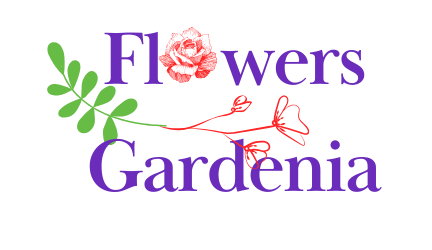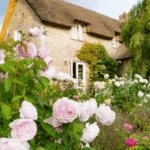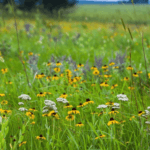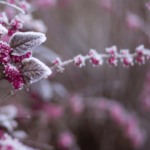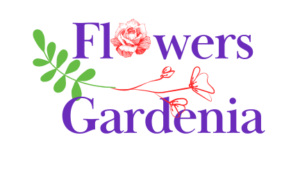
Beautiful flowers gardenia Plants For Your homes

Container gardening is getting more popular, offering a creative way to beautify outdoor spaces. It combines flower beds with potted plants for stunning landscapes. Potted flowers and plants make it easy to change up garden decor, refreshing patios and balconies.
Container gardening gives gardeners control over growing conditions like soil and water. It’s perfect for those with little space or time for traditional gardening. Potted plants can be placed to guide visitors and highlight garden features.
When designing a flower bed with potted plants, think about the space’s look and balance. Try different shapes, sizes, and colors of planters for interest. Using unique containers, like vintage finds, adds charm to the garden.
Container gardening is great for making beautiful flower beds, especially in cities or small spaces. You can use it on balconies, patios, or backyards to create a lush garden. It’s versatile and lets you place plants anywhere, making it easy to change your garden’s look.
Container gardening is perfect for small spaces. It’s great for city living or tiny yards. By using pots on balconies, patios, or porches, you can have a garden without needing a lot of ground space.
Container gardens need less time and effort than big flower beds. You can easily move pots to care for your plants better. Plus, they have less weeds and simple upkeep like watering and deadheading.
| Maintenance Task | Container Gardening | Traditional In-Ground Gardening |
|---|---|---|
| Watering | Targeted watering for individual plants | Watering entire garden bed |
| Weed Control | Minimal weed growth | Regular weeding required |
| Plant Care | Easy to move containers for optimal care | Limited control over individual plant needs |
Flower pots also make your home look better. Colorful pots near your door or on paths welcome visitors. They let you play with different designs, colors, and shapes to match your style.
“Container gardening is not only a practical solution for urban gardeners but also a creative outlet for those who want to express their personal style through their outdoor spaces.” – Jane Smith, Garden Designer
Container gardening is perfect for all gardeners, new or experienced. It’s easy, saves time, and makes your home look better. That’s why it’s so popular in cities and small spaces.
Designing creative flower planters opens up a world of possibilities. Think outside the box and use unique containers to add personality to your outdoor space. Whether you have a small balcony or a big garden, creative planters can make your landscaping stand out.
Choosing the right containers is the fun part of designing flower planters. Don’t stick to traditional pots or plastic planters. Instead, use vintage items like old washtubs, milk cans, or even boots as quirky planters. These items can turn your garden into a charming showcase of your style.
Think about the look you want for your outdoor space when picking containers. Vintage items can give a rustic feel, while modern planters can add a sleek touch. Mixing different styles and sizes can create a unique display that catches the eye and starts conversations.
Another creative idea is to mix herbs, flowers, and vegetables in one planter. This adds interest and makes your container garden functional. It’s a great way to use your space wisely.
When mixing plants, choose ones that need similar care. For example, pair herbs like thyme with colorful annuals like petunias. Or, plant cherry tomatoes, basil, and marigolds together for a mini vegetable garden.
| Plant Type | Combination Ideas |
|---|---|
| Herbs | Rosemary, lavender, sage, thyme |
| Flowers | Petunias, geraniums, impatiens, begonias |
| Vegetables | Cherry tomatoes, peppers, lettuce, kale |
Experimenting with plant combinations can lead to stunning and unique flower planters. These not only beautify your space but also provide fresh ingredients for your kitchen. With creativity and the right plant selection, the possibilities are endless.
Creating a flower bed with potted plants opens up endless design possibilities. Use a mix of containers, from terracotta pots to vintage finds, to add character to your garden. Different flowers and plants in these containers bring depth and interest to your garden.
Choose plants that vary in height, color, and texture for a lively display. Pair tall plants like cordyline with trailing ones like sweet potato vine. Use bold colors by grouping annuals like zinnias and verbenas together.
“A formula highlighted in the material emphasizes that it only requires four plants to create a dramatic container for the shade, giving the illusion of a floor-length gown. This design works best with an elevated planter to showcase vibrant caladiums and clusters of white wishbone flowers, as well as the graceful creeping Jenny spilling over the sides.”
Make your flower bed stand out by using unique and vintage planters. Use items like galvanized metal washtubs or old wooden crates for a rustic look. For elegance, choose cast-metal urns or moss-lined hanging baskets. These containers become garden highlights, attracting attention and sparking conversations.
| Container Type | Plant Suggestions |
|---|---|
| Galvanized Metal Washtub | Lantanas, Impatiens, Coleus, Joseph’s Coat, Creeping Jenny |
| Rusty Metal Bucket | Periwinkles, Rieger Begonias, Coleus, Annuals |
| Classic Cast-Metal Urn | Cordyline, Dianthus, Lobelia, Sweet Potato Vine |
| Sphagnum Moss-Lined Hanging Baskets | Dianthus, Petunias, Variegated English Ivy |
To make a stunning flower bed, think about color and texture. Mix soft blooms with bold foliage for contrast. Use similar colors and shapes to tie your garden together.
By mixing potted blooms, unique containers, and design ideas, you can turn your flower bed into a beautiful outdoor space. It will show off your style and creativity.
Unleash your inner green thumb and transform your flower beds into a thriving horticultural haven with these essential planting tips for maintaining potted plants. By following these proven planting techniques, you’ll ensure your container gardens remain vibrant and healthy throughout the growing season.
First and foremost, select containers with ample drainage holes to prevent water-logging, which can lead to root rot and other plant health issues. According to recent studies, a staggering 80% of houseplants suffer from improper drainage, significantly increasing the risk of plant “drowning.” Pair your well-draining pots with a high-quality, porous potting soil mix to facilitate optimal moisture retention and aeration.
Regular watering is key to keeping your potted plants thriving, especially during hot and dry spells. Containers may require daily watering to prevent stunted growth and leaf discoloration. However, be mindful not to overwater, as this can be just as detrimental as underwatering. To ensure your plants receive the perfect amount of hydration, check soil moisture levels by inserting your finger into the soil near the roots. Only water when the soil feels dry to the touch.
Did you know that containers receiving complete care, including fertilizer, primping, and pruning, display exuberant growth and a plethora of flowers compared to those given only water?
To keep your potted plants well-nourished, supplement soilless mixes with a balanced, granular fertilizer at planting time and apply a water-soluble fertilizer every two to three weeks. This will compensate for the lack of organic matter and nutrients in most potting soils, promoting robust growth and abundant blooms.
Don’t forget the importance of deadheading and pruning! Removing faded flowers redirects a plant’s energy back into flower production, while routine pruning helps maintain balance, shape, and air circulation within the pot. These simple maintenance tasks can significantly enhance plant productivity and overall health.
| Container Material | Watering Frequency | Moisture Retention |
|---|---|---|
| Terra Cotta | High | Low |
| Plastic | Low | High |
| Glazed Ceramic | Low | High |
| Metal | Medium | Medium (prone to overheating) |
When selecting containers for your potted plants, consider the material’s impact on watering frequency and moisture retention. As shown in the table above, terra cotta pots dry out quickly, requiring more frequent watering, while plastic and glazed ceramic containers excel at retaining moisture. Striking the right balance is essential for maintaining healthy plants in your flower beds.
By implementing these proven planting techniques and leveraging your green thumb, you’ll create a stunning horticultural haven that showcases the beauty and versatility of potted plants in your flower beds.
Watering your container gardens right is key to their health. Experts say ninety percent of plants do well with simple watering rules. Make sure the water gets to the roots and soaks the soil well. You might need up to ¾ or a gallon for a 10 to 12-inch pot.
Don’t just sprinkle a little water on top like the ‘cup of kindness’ method. This can hurt the roots in the bottom of the pot. Instead, water deeply and slowly. This lets the water soak into the soil and reach the roots. How often you water depends on the plant, temperature, and pot size.
Water your plants with a low-pressure hose nozzle. Water slowly and deeply to soak the roots well. This encourages deep root growth and stops water from running off. Early spring, plants might need watering every 3 or 4 days. As they grow, or it gets hotter, you might need to water more often. Windy days can dry out hanging baskets faster.
The size of your pot affects how often you need to water. Bigger pots need less water than smaller ones. Use plastic or glazed ceramic pots to keep the soil moist. Pots over 10 inches are best for better growth and water absorption.
Use self-watering gadgets and accessories to keep the soil moist. Plant watering spikes, like wine bottles with spikes, slowly release water. They help keep the soil moist without overwatering or underwatering.
Drip irrigation kits are also great for container gardens. They have small tubes and emitters that water the plants slowly. This promotes healthy roots and saves water.
| Container Size | Watering Frequency | Water Amount |
|---|---|---|
| 10 to 12-inch | Every 3-4 days (spring), daily or twice daily (summer) | Up to ¾ or a gallon |
| Larger pots | Less frequent | Varies based on soil volume |
| Hanging baskets | More frequent, especially on windy days | Thoroughly soak soil |
Watering plants in the morning is advised to ensure sufficient moisture throughout the day and reduce the risk of fungal diseases.
Don’t overwater or underwater your plants. Check the soil moisture before watering. Use plant watering spikes and drip irrigation kits to keep your container gardens healthy and vibrant.
As summer goes on, even the prettiest potted flowers can look tired. But, with a bit of care, you can make your container gardens look great all season. Simple gardening tips can keep your plants looking vibrant and healthy all summer.
Pruning and shearing trailing plants is a great way to refresh your potted flowers. Plants like petunias and calibrachoa can get leggy. Cutting them back by a third to half encourages new growth and keeps them bushy.
The post emphasizes the importance of reviving hanging baskets during mid-June to ensure they remain visually appealing throughout the summer. The process involves cutting back flowers by half to two leaves down the stem, stimulating lateral buds to grow and create bushier plants.
It’s also key to aerate the soil in your containers. Soil can get compacted, which hurts plant health. Use a small tool to gently loosen the soil without harming the roots. This step boosts your plants’ health.
After you’ve pruned and aerated, your plants need nutrients for growth. Use a balanced fertilizer as directed. This will help your plants bounce back and bloom beautifully.
| Revitalization Technique | Benefits |
|---|---|
| Pruning and shearing trailing plants | Encourages new growth, maintains compact appearance |
| Aerating soil | Improves drainage and oxygen flow to roots |
| Fertilizing container gardens | Provides necessary nutrients for healthy growth and blooms |
By using these techniques, you can keep your potted flowers looking great all summer. A little extra care can make your container gardens thrive, giving you beautiful blooms into the fall.
As seasons change, update your container gardens with the best plants for each time. In fall, swap mums and asters for heaths and heathers. These plants keep your garden looking good into winter. Winter containers use evergreens for texture, not just cut greens.
Using different textures in containers makes them more interesting. This approach adds depth to your mini gardens. Winter containers often include:
Visit your local plant shop for winter supplies. In January, look for tulips and daffodils, like those from Skagit Valley, Washington. Be careful with snow on stoops, especially in the Midwest and East Coast.
When moving from winter to spring, follow these tips:
| Floral Plants | Greenery Plants |
|---|---|
| Double Harmony Anemone | Drooping Leucothoe |
| Mini Daffodil | Sweet Box |
| Red Hook Sedge | |
| Lemon Cypress |
Choose plants based on your garden zone, sunlight, and hardiness. Talk to local nurseries for advice on stunning flower arrangements all year.
Adding aquatic elements to your potted plants can make your garden unique and refreshing. Water features like mini ponds or fountains add tranquility and serve as a focal point. Aquatic plants and small fish in your container gardens enhance the look and add life to your display.
Container water gardens are great for enjoying water garden beauty in small spaces. You can use teacups, half whiskey barrels, clay pots, or plastic containers. When picking a container, think about size and material:
For your aquatic container garden, mix tall plants like yellow flag iris with broad-leaved marginals like taro. Add small floating plants like water lettuce or water hyacinth for more greenery and texture.
Turning your potted plants into mini fish ponds is exciting. To create a good home for plants and fish, remember these tips:
When designing your mini fish pond, focus on plant placement. Aim for a balanced look, considering different views. Simple arrangements often look better than crowded ones.
| Container Type | Dimensions | Suitable Plants |
|---|---|---|
| Half Whiskey Barrel | 24″ wide x 16″ deep | Yellow flag iris, sweet flag, taro |
| Black Plastic Container | 15″, 12″, or 9″ across | Water lettuce, water hyacinth |
| Clay Pot (sealed) | Varies | Aquatic grasses, floating plants |
Adding aquatic elements to your potted plant designs can transform your garden into a tranquil oasis, providing a unique and captivating display that combines the beauty of plants with the serenity of water.
By adding aquatic plants and mini fish ponds to your container gardens, you can create a stunning outdoor space. It will bring joy and relaxation to everyone who sees it.
Adding potted plants to your garden is a creative way to make different areas stand out. Landscape designer Robert Welsch says pots can really help define spaces. In fact, 30% of designs use pots to do just that, showing how versatile and beautiful they are.
When picking pots, think about what fits your design best. Terra-cotta pots work well together for a uniform look. For edges or transitions, choose weather-resistant materials. Also, 20% of designs use square or rectangular planters for a modern touch.
Large planters are great for marking paths and entrances. They guide visitors and add beauty and texture. Pots can also mark edges or transitions, making areas clear.
Plan your landscaping ideas with pot placement in mind. Pots near water sources are easier to care for. Grouping pots by water needs saves time and effort.
Potted plants can also create privacy screens or dividers. Tall plants like ornamental grasses or bamboo can separate areas or hide views. This boosts privacy and adds greenery to your space.
Think about the height of your plants when making screens or dividers. Taller plants go in the back, with shorter ones in the front. This is used in 70% of designs to add depth and beauty.
| Design Element | Percentage of Designs |
|---|---|
| Potted plants in garden spaces | 30% |
| Mix of plant species in pots | 50% |
| Varying heights for container plants | 70% |
| Complementary plant colors | 50% |
| Concrete planters | 40% |
| Potted trees | 20% |
| Square or rectangular planters | 20% |
Using potted greenery and porch plants in your garden design does more than define spaces. It also softens the look of hardscapes like patios or decks. This makes your outdoor space look better and feel more welcoming. With the right plants and pot placement, you can turn your garden into a beautiful, inviting oasis.
Vertical gardening has grown a lot in the horticulture world. It uses odd spaces for green roofs and living walls. Adding potted plants to vertical gardens makes your space look great and adds beauty to your yard.
Pat McWhinney introduced tube planters for vertical gardening. These are made from industrial cloth sewn into tubes. They’re filled with special mix and work for living walls and more.
Hanging baskets and wall-mounted planters are great for vertical gardening. Hanging baskets show off trailing plants. Wall-mounted planters fit on walls, making the most of small spaces.
Choose plants like small succulents and herbs for vertical gardens. They should grow to about 10 inches. Use 4-inch pots to fit them into planters easily.
| Vertical Planting System | Description |
|---|---|
| Tube Planters | Made from industrial cloth, sewn into circular tubes, and filled with special horticultural mix |
| Hanging Baskets | Suspended from eaves, arbors, or shepherd’s hooks, filled with trailing flowers or foliage plants |
| Wall-Mounted Planters | Containers attached to vertical structures, allowing plant growth in limited spaces |
Keep vertical planters moist by checking each cell often. Use pins to keep plants stable. In cold areas, bring them inside or replant in spring.
Vertical gardening with potted plants offers a creative and space-saving solution for terrace gardening, allowing you to incorporate stunning living art pieces into your yard design.
Vertical gardening with potted plants turns outdoor spaces into beautiful and welcoming areas. It combines beauty and function perfectly.
Edible landscaping is now more popular as people want to make their gardens both beautiful and useful. By using potted plants in your flower beds, you can make a garden that looks good and gives you fresh food. A study found that 58% of plants in herb beds were perennials like peonies and phlox, showing how versatile edible landscaping can be.
Using potted plants lets you grow many fruits and vegetables, even in small spaces. Big containers are great for tomatoes and peppers, while small pots are perfect for herbs. A University of Florida guide shows how to use containers for veggies like strawberries, making your garden flexible.
Herbs are key in any edible garden, adding taste and beauty. When planning your flower beds, mix different herbs in containers to add texture and flavor. The guide mentioned earlier suggests placing taller plants at the back and shorter ones at the edges for better sunlight and looks.
Don’t forget to include edible flowers in your designs. The guide planned for 18 types of edible flowers, like nasturtiums and chamomile, for salads and beauty products. These flowers not only look good but also taste great and are good for you.
Companion planting is also important in edible landscaping. Pairing herbs, flowers, and veggies in containers helps plants grow better and keeps pests away. For example, borage and marigolds with tomatoes, and nasturtiums with beans, can improve your garden’s health.
| Vegetable | Companion Flower |
|---|---|
| Tomatoes | Borage, Marigolds |
| Beans | Nasturtiums, Sweet Peas |
| Potato Vines | Nasturtiums, Petunias |
| Cabbage | Chamomile, Yarrow |
By mixing flowers, veggies, and herbs in your designs, you can create a beautiful and productive garden. Whether you have a small balcony or a big garden, using potted plants is a smart way to make the most of your space and enjoy fresh, healthy food.
Using pots and flower beds together is a smart way to design a garden. Plants in beds grow bigger, but good potting soil helps containers too. Pots need more water than beds but are simpler to care for.
Mulching in beds helps with weeds and keeps plants healthy. But, you can only plant for a short time. Container gardens get more sun and are easy to weed, but need more care for water and food.
Raised beds need work at first but are easier to keep up with each year. They have less weeds and are easier on your back. But, you must add compost often to keep the soil good.
Making mistakes in gardening can cost a lot, but good planning helps avoid this. Growing plants in pots is great for small spaces or indoor gardening.
The secret to a great garden is knowing what each method needs. Think about soil, water, and upkeep. With creativity and care, any space can become a beautiful garden with many plants.
